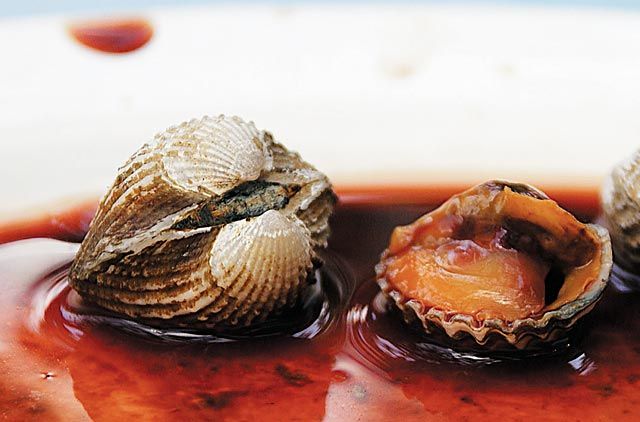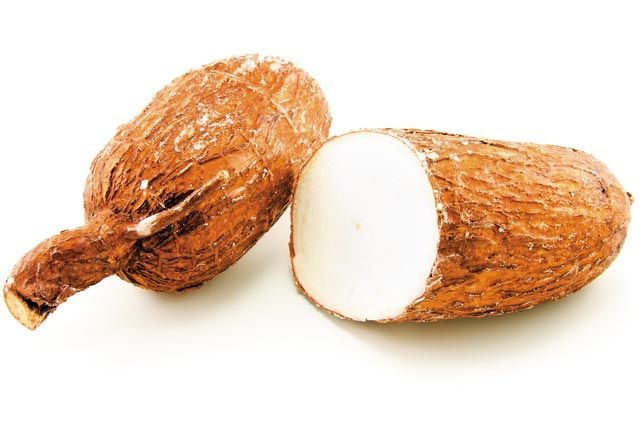Food poisoning from a bad takeaway is a walk in the park compared to the havoc some of these top ten deadly ingredients can wreak. Risking anything from asphyxiation to hepatitis for the sake of a snack, 4men asks: are you ready for your last bite?
Fugu, Japan
Considered a delicacy in Japanese cuisine, fugu (puffer or blowfish) must be prepared by a certified fugu chef - who undergoes a two- to three-year apprenticeship - to guarantee safety. The lethal element is tetrodotoxin (rumoured to be 1,200 times more toxic than cyanide), contained in the liver, ovaries and skin. Once ingested it paralyses the consumer's muscles and eventually leads to asphyxiation. It's a versatile fish and is served as sashimi, pickled, fried or stewed. Toxic remains are kept under lock and key, until properly discarded, to prevent misuse.
Cassava, South America
In view of its dubious reputation, cassava root is surprisingly popular as the third major source of carbohydrate in the world. The bark and leaves of this native South American plant (also referred to as yucca or yuca) contains cyanide and can cause death if the root is not washed or cooked properly. It is mildly flavoured and is a staple food in South America. Like a potato, it can be fried, boiled, puréed or baked. Cassava is also ground into tapioca flour and is used to make tapioca pearls that are in turn used in desserts and Asian bubble tea.
Live octopus, South Korea
Also known as sannakji, this writhing speciality is usually cut into small pieces (but can also be served whole) and seasoned with sesame oil and seeds. Care has to be taken to thoroughly chew the pieces, which are often still alive, as the suction pads on the tentacles can attach to the mouth, or in some cases, fatally to the throat thereby choking the diner. It remains a popular dish in South Korea and was featured as a detour challenge on the Amazing Race 4 where teams had to eat an entire bowl of the squirmy cephalopod in Seoul.
Bullfrog, Namibia
If temporary kidney failure or death doesn't have you batting an eyelid, then this delicacy might just be the one to try. Although the legs of a frog are commonly eaten across the world, this little giant (the bullfrog apparently grows to the size of a housecat) has all parts devoured except for the alimentary canal. The troubling toxins are believed to reside in the skin and organs, which is what makes it a deadly choice for dinner. As a cautionary measure, the bullfrog is eaten only after the ‘third rain' or mating season when toxin levels decrease slightly.
Ackee, Jamaica
Although aesthetically pleasing and chock full of vitamin A and proteins, this fruit turns lethal if the alkaloid toxin-rich red and black parts are consumed instead of the ripe inner yellow flesh. It could result in ‘Jamaican vomiting sickness', which may lead to hypoglycaemia or even seizures. Sufficiently scared, the US banned the import of the fresh fruit from Jamaica where it is a main ingredient of the Jamaican national dish - saltfish and ackee.
Apricot seeds, Turkey
Chinese medicine has long prescribed apricot seeds as a remedy for respiratory diseases. It has also been considered an immune booster because of its high vitamin B17 content. However, since the seeds contain cyanogenetic glycosides, they release hydrogen cyanide, which leads to poisoning and ultimately death if consumed in large portions. The UK's Food Standards Agency recommends no more than two apricot seeds per day. Reports have also shown that eating ten apricot seeds can kill a child.
Wild mushrooms
Foragers beware! These innocuous fungi may resemble other edible supermarket varieties but can result in a rather nasty case of mycetism (mushroom poisoning). Symptoms may range from a rather bearable headache to the progressively worse stomach cramps, liver failure and - no surprise here - even death. One of the deadliest varieties is appropriately named ‘death cap', which has been singled out for claiming the life of Roman Emperor Claudius. Moral of the story: don't go mushroom picking without a mycologist (mushroom expert).
Silver stripe Blaasop, The Mediterranean
Originally found in the Indian and Western Pacific oceans, this shiny specimen made its way to the Mediterranean courtesy the Suez Canal. In 2007, ten deaths - eight in Egypt (8) and two in another Middle Eastern country were connected to its consumption. The deadly parts of the Blaasop are the reproductive organs, liver and skin, which all need to be thoroughly cleaned to avoid breathing problems, fatal muscle paralysis or death according to the Rhodes Biological Station. Warnings were sent out to fishermen in 2005 by marine experts in the Mediterranean to prevent such deaths.
Casu Marzu, Italy
Indulging in this maggot-ridden cheese from Sardinia could result in abdominal pain, bloody diarrhoea, cramps, or worse still, insect larvae thriving in your intestines. This cheese is actually Pecorino, which begins fermenting when the intentionally introduced cheese flies' eggs start hatching. Banned by the European Union due to obvious health reasons, it can still be bought on the black market and is considered an aphrodisiac locally. How do you tell if it's fresh? If the maggots are dead, it's no good. Also, eyes need to be shielded when sampling as the live maggots are rumoured to jump up to six inches high.
Blood clams, China
An order of this Chinese speciality comes with the possibility of contracting hepatitis A, dysentery and typhoid. Since a single clam has the ability to process up to 40 litres of seawater daily, it becomes easier for their flesh to store high levels of the bacteria associated with the aforementioned diseases. The risk factor is compounded by the rapid cooking method, which involves boiling the clams quickly, not allowing enough time for all the bacteria to be killed. Banned in Shanghai since 1988, it's still possible to source the delicious shellfish from the black market but it will come with a heavy price tag. Is it really worth the risk?











